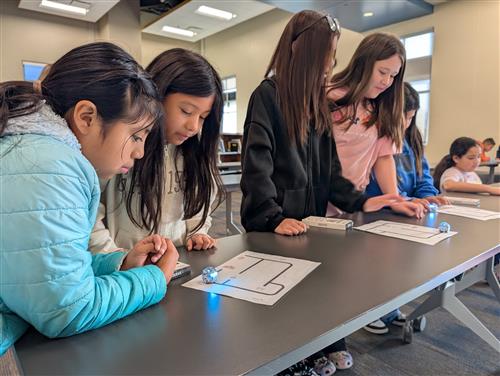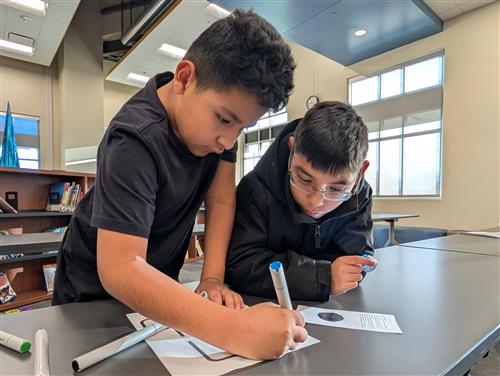- Starr Elementary
- Homepage
Coding Comes to Life: Bringing Grand Island to the Classroom
Robots are no longer a thing of the future.
Elementary students at Grand Island Public Schools have been using robots in the classroom for a few years, as they learn coding and critical thinking skills. Young students across the district have recently embarked on a journey of creative problem-solving using these skills and robots in their curriculum unit – all while building a miniature version of Grand Island.
In media class, students explore a computer coding unit starting in December. They start in the computer lab using computer software Blockly, said Beth McCracken, Library Media Specialist at Starr Elementary. For more hands-on application of coding, students then use the Ozobot robots to see the math and coding come to life.
“It's really to push computational thinking, which is identifying what a problem is, solving that problem, and critical thinking,” explained McCracken of the unit.
The Ozobots follow a color code that is created when students draw lines with special markers. Depending on the color and pattern or code drawn, the Ozobot will do different actions. For example, a black line will make the robot travel straight, but a color combination may tell it to turn left.
At Starr, the unit includes a project where the students build their own version of Grand Island on tabletop paper and use their Ozobot coding knowledge. Students draw buildings and landmarks, and map out roads they then code the robots to drive on. Students work together to plan and execute their vision, learning valuable teamwork and communication skills along the way.
“We’re trying to make the biggest house we can, and make the town all together,” said Starr fourth grader Julien Saenz.
Sophia Cabrera-Andrade, a Starr fourth grader, said she added Target, Starbucks, and other places she knew about to the city project.
“The Ozobots are kind of like, complicating, but really fun as well,” Cabrera-Andrade said. “The hardest thing is when your code doesn’t work and you have to try again, because you never know if it will work again,” she explained.
Coding is also a universal language. McCracken added that the coding resources use cardinal directions so it is accessible to our very diverse learners and their developing (ELA) English language & reading skills.
“That kind of access also allows learners who may struggle with traditional learning (text) to excel in coding,” McCracken said.

McCracken said the unit is all about identifying a problem and trying to figure out how to solve it. She said students might have to keep trying if they don’t get the Ozobot working how they want the first time around.
“So, it also teaches perseverance and sticking with something when it doesn't make sense or when it's not working,” McCracken added.
Saenz said in addition to having fun, perseverance was his biggest takeaway from the city-building project.
“It’s okay to make mistakes, because that’s how everyone can learn,” Saenz said.

McCracken said she works with her students to teach them how to learn from their mistakes.
“I want the library to be a safe place for them to explore, step into things that they may never have seen or tried before, and feel safe enough to make those mistakes, back it up and try again,” McCracken said.

